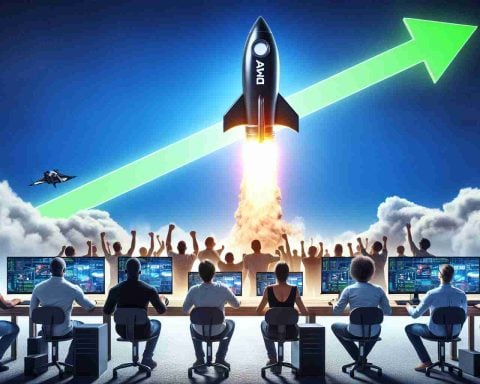Russian Aircraft Corporation, a state-owned company, has recently unveiled state-of-the-art virtual reality (VR) simulators for the Su-57E and MiG-35 fighter jets. This groundbreaking technology is being showcased at the Exhibition Pavilion of Museum Site #1 until August 25, allowing visitors to explore the world’s best aviation technologies.
This public demonstration marks the first time that the Russian Aircraft Corporation has presented the digital training tools used by Russian pilots. The Su-57E digital simulator, designed to replicate the operational environment of the export variant of Russia’s fifth-generation stealth fighter jet, offers pilots a realistic and immersive training experience. By practicing maneuvers and combat scenarios in a virtual setting, pilots can hone their skills without the risks and costs associated with actual flight.
The simulator’s advanced features enable pilots to familiarize themselves with the cockpit layout, master the aircraft’s advanced avionics and weapons systems, and perfect complex maneuvers. Equipped with high-fidelity graphics, motion platforms, and cutting-edge software, the simulator accurately models the performance and behavior of the aircraft.
Artificial intelligence (AI) algorithms have also been incorporated into the simulator to create realistic enemy behavior and tactics, providing pilots with dynamic and challenging training scenarios. By developing their decision-making skills and adaptability in combat situations, pilots are better prepared for real-world missions.
The Su-57E digital simulator integrates seamlessly with a VR system, making pilot training even more immersive. The VR technology replicates the cockpit environment and external conditions, offering pilots a comprehensive training experience. Real-time response to pilot inputs, high-resolution graphics, and simulation of various flight conditions and emergency scenarios ensure that pilots can practice maneuvers and procedures safely and effectively.
By harnessing the power of VR technology, the Russian Aircraft Corporation aims to enhance pilot training efficiency and effectiveness. This immersive training experience reduces the need for expensive live flight training while allowing for more frequent and diverse training sessions. With high-resolution displays, motion tracking systems, and haptic feedback devices, the VR setup provides pilots with detailed visuals, accurate simulation of physical sensations, and precise alignment of visual and auditory feedback.
The introduction of these VR simulators represents a significant leap forward in pilot training for the Russian Aircraft Corporation. Revolutionary technologies such as AI and VR are revolutionizing the way pilots prepare for their missions, ensuring that they are well-equipped to navigate the complexities of modern warfare.
Additional facts:
1. The Su-57E and MiG-35 fighter jets are part of Russia’s advanced aircraft fleet.
2. The VR simulators developed by the Russian Aircraft Corporation are designed to replicate the operational environment of these fighter jets.
3. The Exhibition Pavilion of Museum Site #1 is the venue where the VR simulators are being showcased to the public.
Key questions and answers:
1. How do the VR simulators enhance pilot training?
Answer: The VR simulators provide a realistic and immersive training experience, allowing pilots to practice maneuvers and combat scenarios without the risks and costs associated with actual flight. They also enable pilots to familiarize themselves with the aircraft’s cockpit layout, advanced avionics, and weapons systems.
2. What technologies are integrated into the simulators?
Answer: The simulators incorporate advanced features such as high-fidelity graphics, motion platforms, cutting-edge software, and artificial intelligence algorithms. These technologies accurately model the performance and behavior of the aircraft and create realistic enemy behavior and tactics for training scenarios.
Key challenges or controversies:
One potential challenge or controversy associated with the topic is the cost of developing and implementing these state-of-the-art VR simulators. The technology and equipment required for such advanced training tools can be expensive, and there may be debates regarding the allocation of resources for pilot training.
Advantages:
1. Realistic and immersive training experience.
2. Reduction in the need for expensive live flight training.
3. More frequent and diverse training sessions.
4. Detailed visuals and accurate simulation of physical sensations.
5. Development of decision-making skills and adaptability in combat situations.
Disadvantages:
1. High cost associated with developing and implementing the VR simulators.
2. Limited availability of the simulators for widespread use.
3. Potential limitations in replicating real-world scenarios and conditions.
Suggested related links:
1. Russian Aircraft Corporation Official Website




















